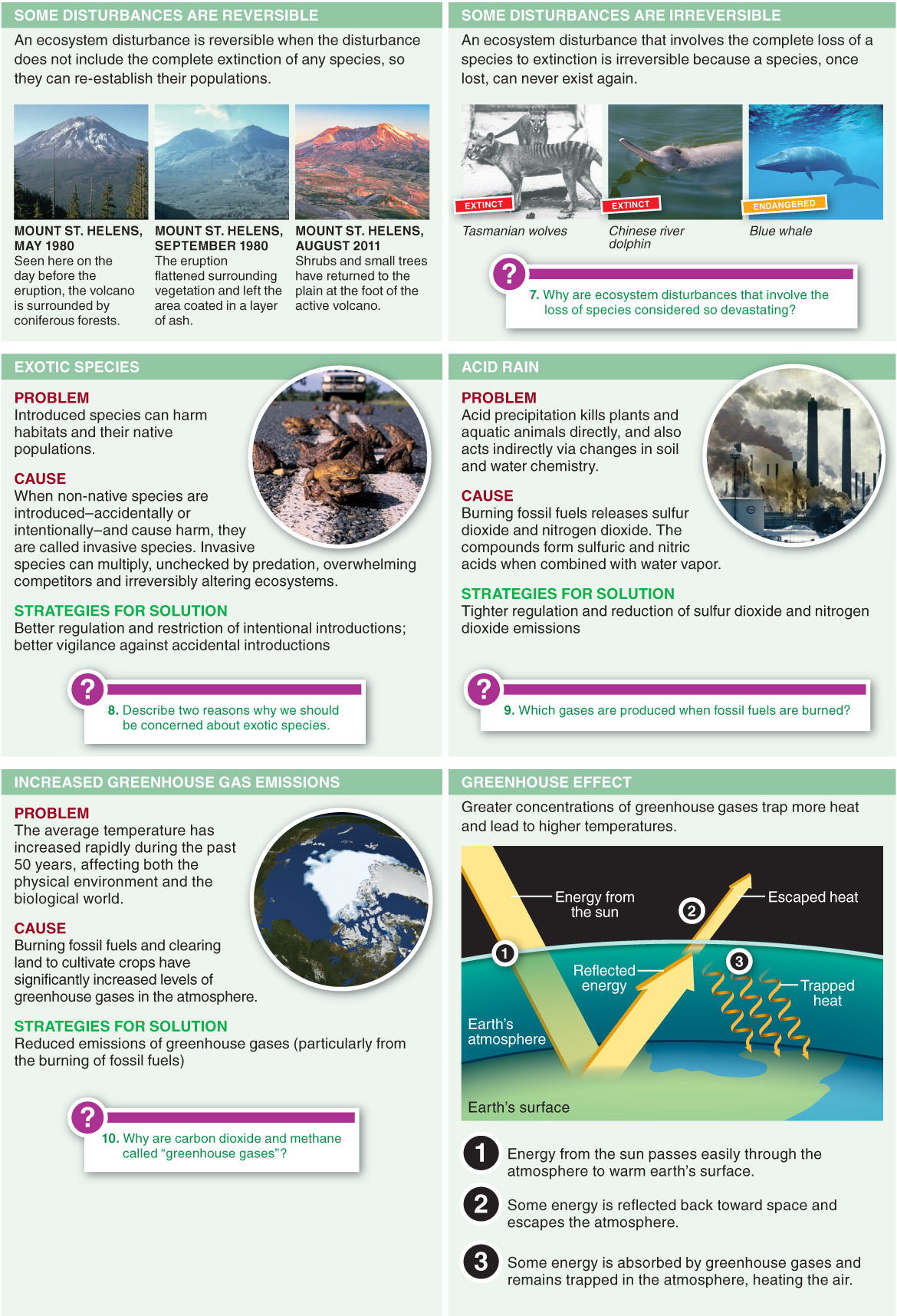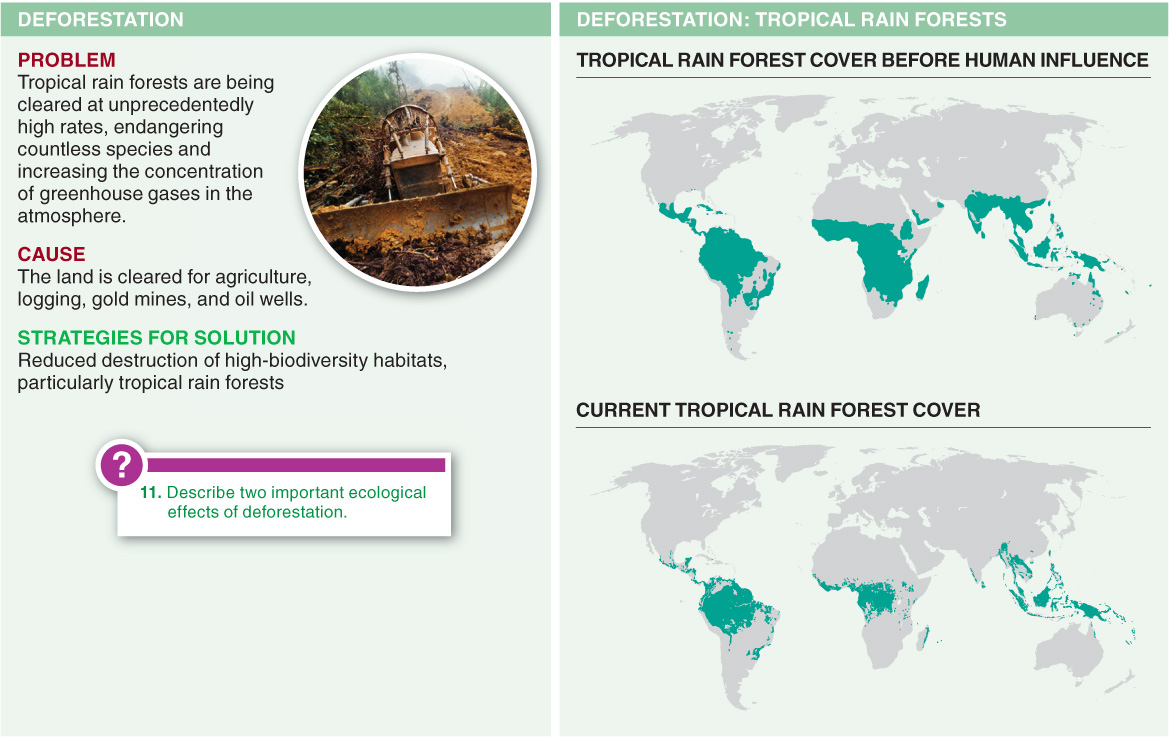16.7–16.11: Human activities can have disruptive environmental impacts.
Disruptions of ecosystems can be disastrous.

Question 16.22
Exotic species can disrupt ecosystems because:
- a) they frequently have no predators in their new habitat and grow unchecked.
- b) they are favored by ecotourists.
- c) they have no natural prey items and so must rely on humans for their survival.
- d) they have better dispersal capability than endemic species.
- e) All of the above are correct.

Question 16.23
Even though there is a carbon cycle, carbon dioxide levels around the world seem to be rising. Which of the following best explains why this is so?
- a) Animals give off carbon dioxide during their normal metabolism.
- b) As the atmosphere heats up, it can contain more carbon dioxide.
- c) The destruction of coral reefs leads to increased levels of carbon dioxide.
- d) More carbon dioxide is being given off by ocean waters as they heat up.
- e) The burning of fossil fuels releases more carbon dioxide into the atmosphere.

Question 16.24
Increased exposure to short-
- a) increases the acidification of lakes and streams.
- b) reduces the rate of photosynthesis by plants.
- c) has lowered the average daily temperature on the earth’s surface by 4% per decade.
- d) increases the rate of photosynthesis by plants.
- e) has raised the average daily temperature on the earth’s surface by 4% per decade.

Question 16.25
A charismatic species that can engender significant public support for conservation of other species and the ecosystem they all inhabit is called:
- a) an indicator species.
- b) a keystone species.
- c) a flagship species.
- d) a phylogenetic species.
- e) an endangered species.

685
